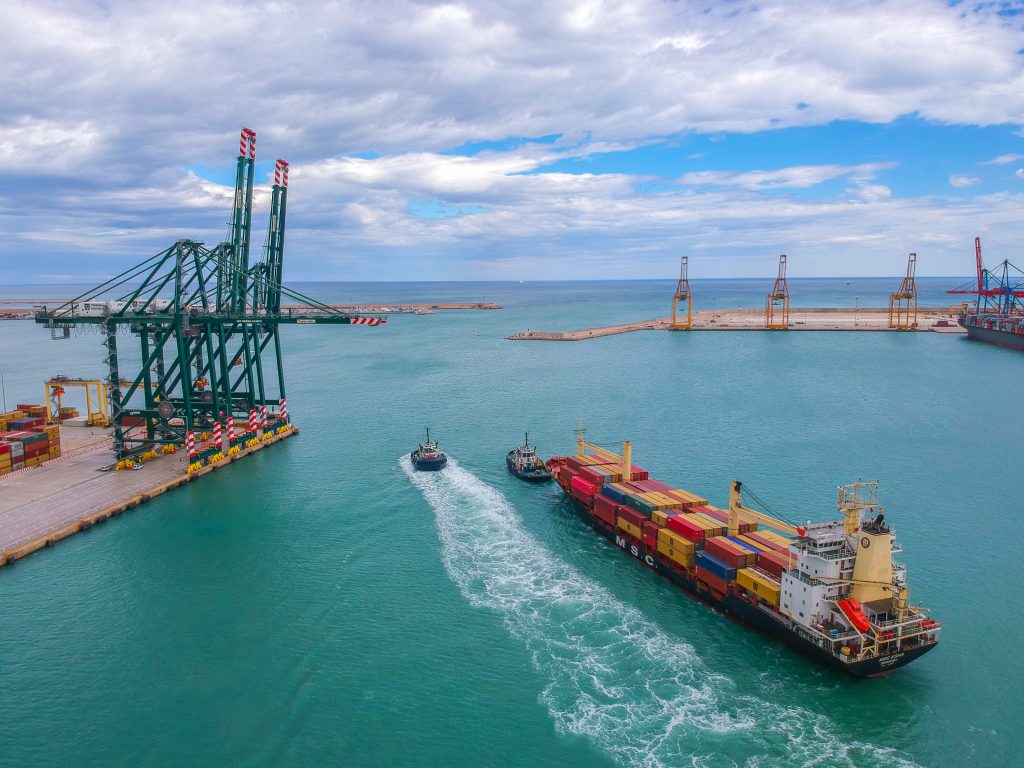
Challenges of the Port of Valencia
In the Accelerator programme 2020 it is expected that a total of 3 grants (one in each Stage) will be co-funded not only by Climate KIC but also by Fundación Valenciaport, in line with the new Climate KIC strategy, with the Deep Demonstration “Net-Zero-Emission, Resilient Maritime Hubs” and with the initiative #SuperLabPorts. The grants co-funded by Fundación Valenciaport in this present call are expected to give response to the following challenges identified in collaboration with challenge owners after a co-creation process with demand-lead approach:
Challenge 1: Innovation in photovoltaic plants in port facilities
The installation of photovoltaic energy in ports presents specificities such as the high level of salinity and humidity, the difficult access for installation and maintenance on cranes or breakwater walls and vibrations that require materials, types of panels and structures that take into account these particularities, in order to maximize the performance of this type of installation in port facilities.
This challenge is looking for start-ups that can provide solutions that maximize the performance of the installation using specific materials, types of panels especially well adapted to the port environment and structures that allow installation on ship-to-shore cranes and RTGs, as well as on breakwater walls. The materials, types of panels and structures proposed could be compared with each other and with standard solutions in pilots to be carried out in the port of Valencia or Gandía.
The aim is to maximize the energy produced, taking into account the constant vibrations and the risk of over-heating of the panels placed on cranes, the complexity of access for installation and maintenance of the panels placed on cranes and on breakwater walls, and the conditions of high salinity and humidity prevailing on all the surfaces where solar panels would be installed throughout the port (car park roofs, building roofs, breakwaters and cranes)
The users of this solution would be the Port Authority of Valencia and the port terminal operators in the Port of Valencia.
Challenge 2: virtual battery for renewable energy storage in an internal network
In all renewable installations for self-consumption there is a temporary decoupling between the energy generated and the energy consumed, that can only be solved if some component allows the absorption of surpluses and provides energy in periods of deficit. If the system is connected to a network with other consumers, this can be achieved through intelligent network management, in which the surpluses of some producers can be used by other consumers.
A key aspect in making investments in renewables attractive to grid members is that these energy flows are reflected in the energy bill of the energy producer, so that both consumed and discharged energy is taken into account. From the point of view of energy management, the rest of the network would act for the electricity producer as an element of electricity storage that has been physically installed, so it can be considered as a virtual battery.
For this system to be viable and attractive, it must include the appropriate elements that allow electricity flows in a technically correct manner (quality of the electricity discharged), it must manage these flows properly, both from an operational and economic point of view, and it must take into account the limitations of the network.
The challenge is to find start-ups that provide both technical and operational solutions, for the creation of a virtual battery system that allows for the proper management of the electricity produced locally by the users of the Port of Valencia.
The clients/users of this solution would be the Port Authority of Valencia and the terminals operated under concession by different operators in the Port of Valencia.
